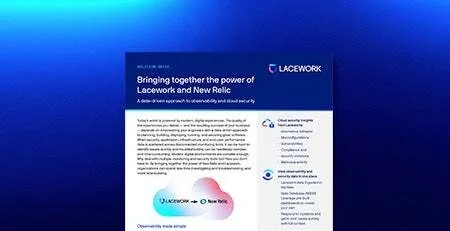Bringing together the power of Lacework and New Relic
Watch DemoA data-driven approach to observability and cloud security
Today’s world is powered by modern, digital experiences. The quality of the experiences you deliver — and the resulting success of your business — depends on empowering your engineers with a data-driven approach to planning, building, deploying, running, and securing great software. When security, application, infrastructure, and end-user performance data is scattered across disconnected monitoring tools, it can be hard to identify issues quickly and troubleshooting can be needlessly complex and time-consuming. Modern digital environments are complex enough. Why deal with multiple monitoring and security tools too? Now you don’t have to. By bringing together the power of New Relic and Lacework, organizations can spend less time investigating and troubleshooting, and more time building.
With New Relic and Lacework, you can:
Bring your data together: Instrument everything and import data from across your technology stack using our agents, integrations, and APIs, and access it from a single UI.
Analyze your data: Get all of your data at your fingertips to find the root causes of problems and optimize your systems. Use curated dashboards, build custom dashboards and charts, or use New Relic’s powerful query language to visualize anything.
Automate the understanding of your cloud: With the rate of change and complexity in the cloud, it’s a daunting task to try to piece together what’s happened and what’s at risk. Lacework automatically makes correlations across your environment that would have taken hours, days, or longer to uncover and piece together.
Respond to incidents quickly: New Relic’s machine learning solution proactively detects and explains anomalies and warns you before they become problems. For any security event, Lacework tells you who, what, when, where, and why and provides a visualization to show you exactly what happened — eliminating the manual queries and intensive research typically needed.
Related Resources
Featured Insights

